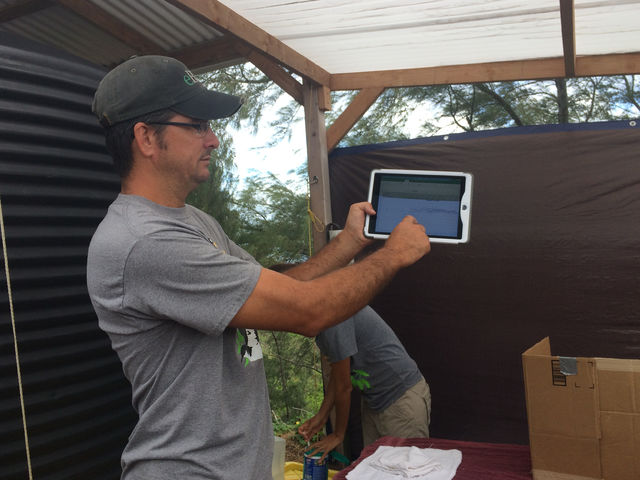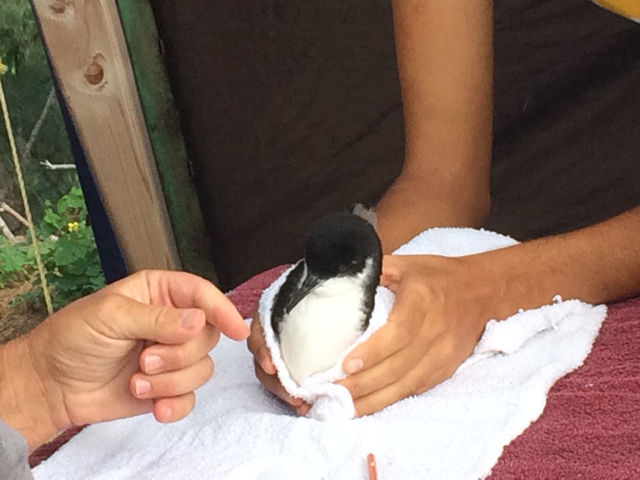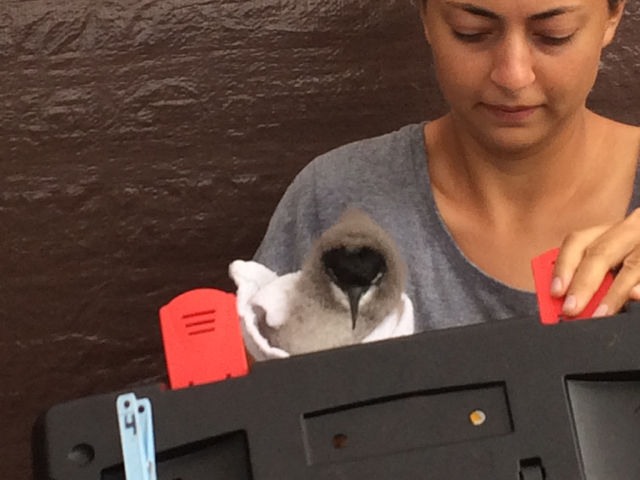NIHOKU — Two more Newell’s shearwater chicks fledged from Crater Hill last week, bringing the number of babies under the care of the Pacific Rim Conservancy team to five. “It really makes me happy to see them out there flapping
NIHOKU — Two more Newell’s shearwater chicks fledged from Crater Hill last week, bringing the number of babies under the care of the Pacific Rim Conservancy team to five.
“It really makes me happy to see them out there flapping and practicing, and then to have them fledge like normal birds (is great),” said Robby Kohley of Pacific Rim Conservation, who has been caring for the birds.
A total of eight chicks were nestled into human- made burrows in mid-September inside the island’s first six-acre predator-proof enclosure, which provides a safe nesting site for other seabirds as well.
Kohley has been hand-feeding them a slurry of fish and squid. Their growth is monitored daily until they leave their nests.
All of these baby seabirds will imprint on Nihoku as they fledge and return to the site as adults to create their own breeding colony in three to five years.
That’s the goal of the entire project: to protect and restore the native ecosystem of Nihoku, or Crater Hill, at Kilauea Point National Wildlife Refuge and provide a safe nesting place for ao (Newell’s shearwater) and uau (Hawaiian petrel), as well as other native ground nesting birds.
“This is the result of several groups partnering together,” said Lindsay Young of Pacific Rim Conservation. “It’s a very important project.”
Those partners include U.S. Fish and Wildlife Service, National Fish and Wildlife Foundation, The American Bird Conservancy, Pacific Rim Conservation, and Kauai Endangered Seabird Recovery Project.
A 2,048-foot, $300,000 fence that encircles the predator-proof space is the key to securing the area for the safety of the birds. The fence stands 6-feet-high and is made with small, chain-link mesh hooked to stainless steel posts.
“The mesh is so small that even 2-day-old mice can’t get in, and the fence is buried into the ground,” said Jennifer Waipa, supervisory park ranger for the Kilauea Refuge. “And there’s a hood over the top of the fence so nothing can climb over.”
The fence was completed in September 2014 after three months of construction. Everything was done with local labor. Trapping was done for larger animals, like cats, and diphacinone, a rodenticide, was put in bait boxes for rodents.
All predators were removed from the area in January 2015, native plant restoration began in August 2015 and now each fall, ao and uau chicks are transferred into the enclosure.
Threatened Newell’s shearwaters are endemic to Hawaii and Kauai is home to an estimated 90 percent of the population. Those birds now have a completely secure place to pair off and raise their chicks on Kauai.
“We’re hoping to eventually establish more populations on other islands,” Young said.




